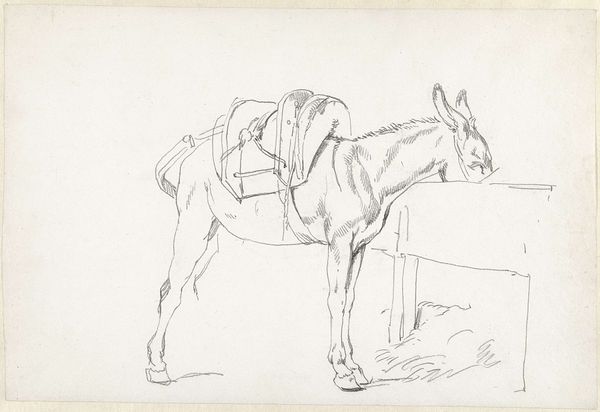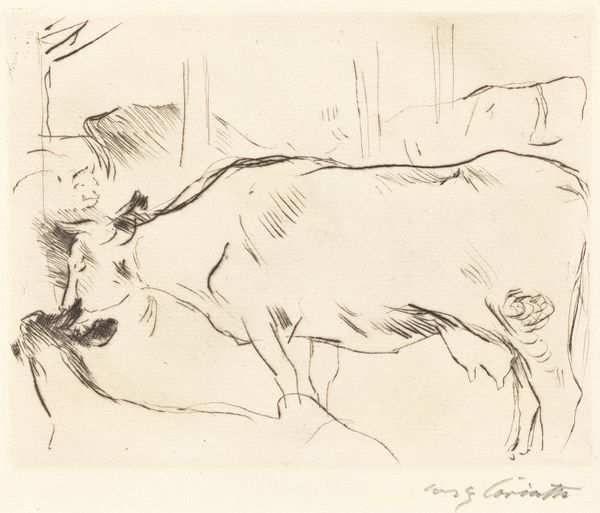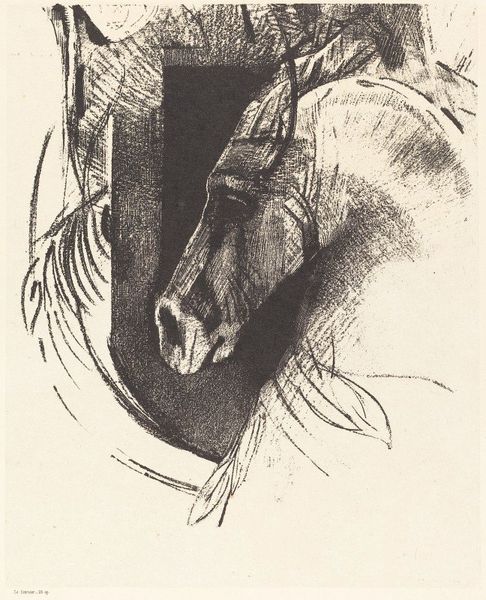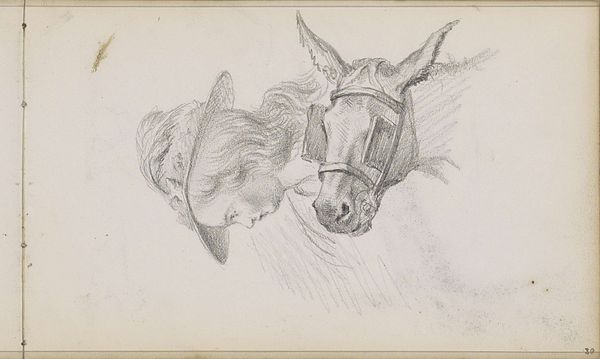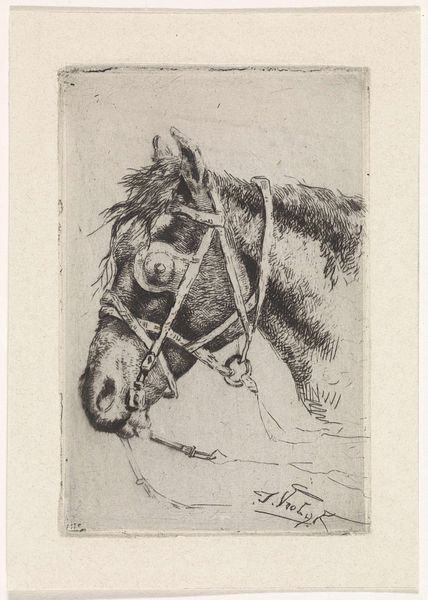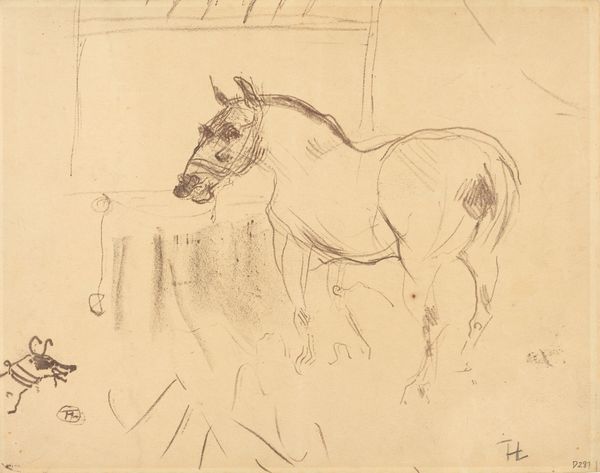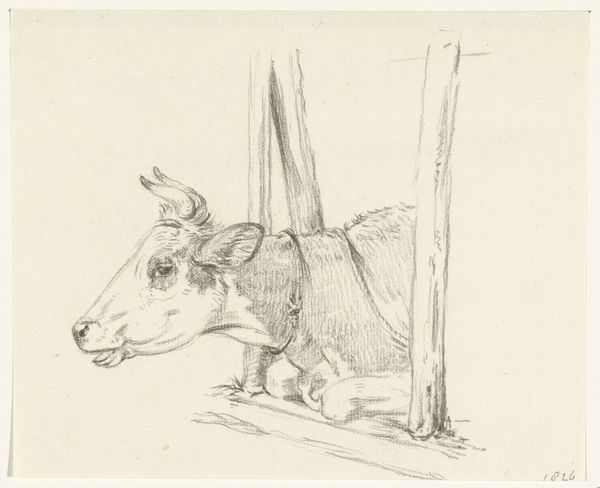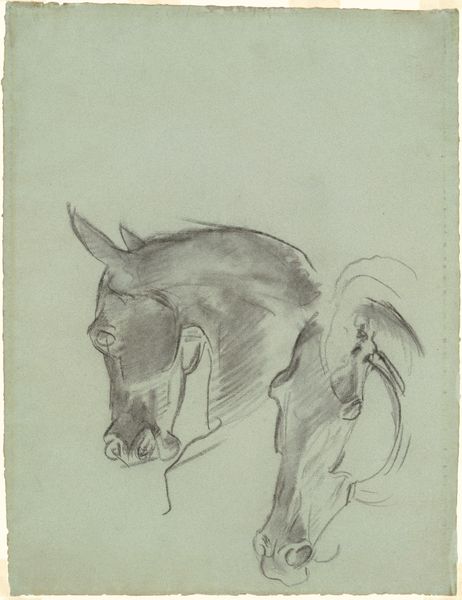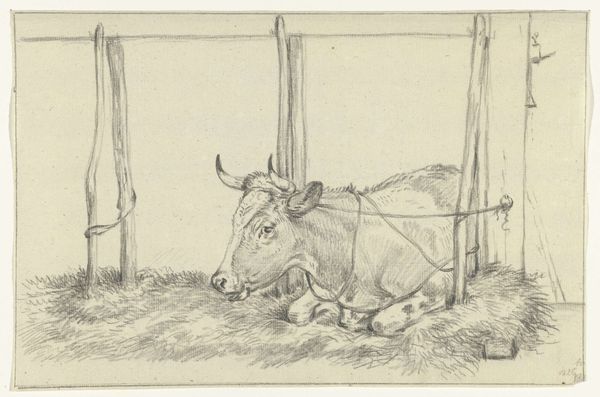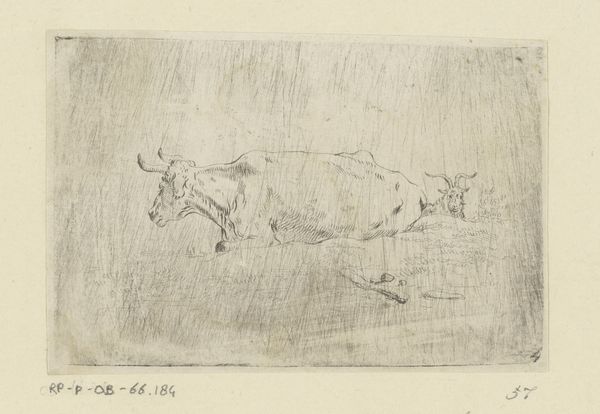
drawing, ink, pencil
#
portrait
#
drawing
#
pencil sketch
#
figuration
#
ink
#
pencil
#
line
#
pencil work
#
realism
Dimensions: width 118 mm, height 151 mm
Copyright: Rijks Museum: Open Domain
Editor: Here we have Gijsbertus Craeyvanger’s “Head of a Cow” from 1836, rendered in pencil and ink. I’m struck by the artist's commitment to realism here, the detailed textures... what is your interpretation of this work? Curator: From a formalist perspective, consider the artist's control of line and tone. The varying density of the pencil strokes defines form and creates a subtle play of light and shadow. Observe how the linear quality captures the texture of the animal's coat, creating depth, while darker strokes suggest the mass of the head. Do you notice how Craeyvanger uses hatching? Editor: Yes, particularly around the eye and along the neck. The hatching seems to create volume without relying on strong contrasts. It's all very delicate. Curator: Precisely. This delicate approach highlights the essence of the subject through pure form. It is an investigation into the subject using the materiality of the medium itself, creating a harmonious visual experience. The essence of 'cowness,' you might say. Editor: That makes sense. I see now how focusing on the line work reveals so much about the artist’s technical skill and attention to detail. It’s like he’s building form through texture alone. Curator: Indeed. In the absence of colour, Craeyvanger maximizes the tonal range available through the pencil and ink, exploring the relationship between form and surface. Editor: It’s interesting to see how the artist could capture the essence of a cow’s head just through the skillful manipulation of lines and shading. Curator: And understanding how technique dictates form in a drawing such as this, it underscores the power of formal elements. Editor: I'll certainly look at drawings with fresh eyes going forward.
Comments
No comments
Be the first to comment and join the conversation on the ultimate creative platform.


